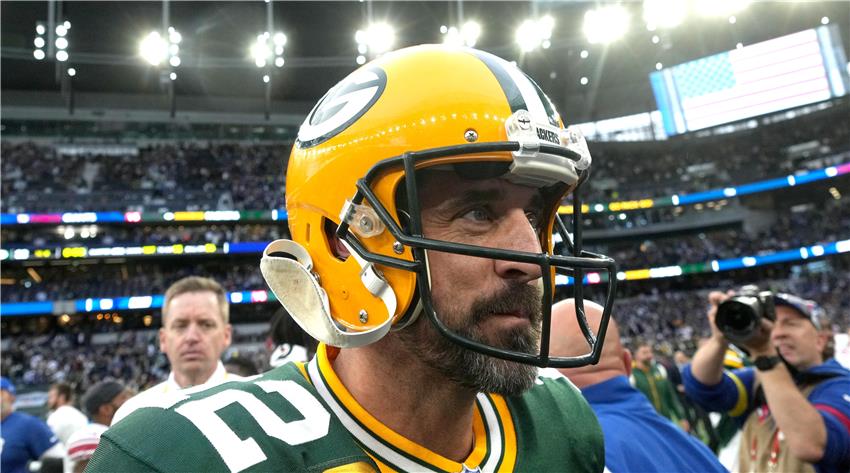
The NFL Draft Chess Match - Need vs Best Player Available
Imagine a high-stakes poker game, where the prize isn't just a pile of chips but the future of an NFL franchise. This is the NFL Draft, a strategic dance of decision-making, risk-taking, and hopefully, franchise-making. The burning question at the heart of it all: Should teams address their most pressing needs or go for the best player on the board?
Imagine a high-stakes poker game, where the prize isn't just a pile of chips but the future of an NFL franchise. This is the NFL Draft, a strategic dance of decision-making, risk-taking, and hopefully, franchise-making. The burning question at the heart of it all: Should teams address their most pressing needs or go for the best player on the board? In this two-part series, we'll explore these two draft philosophies and how they've shaped the course of the NFL. Part 1 will focus on the need-based approach.
Addressing the Achilles' Heel: The Need-Based Approach
If a team's weakness is as glaring as a lighthouse in the dead of night, it screams for a need-based drafting strategy. In this scenario, teams zero in on their deficiencies and select players who can turn those weaknesses into strengths. Think of a team with a leaky defense that couldn't stop a toddler's tricycle, let alone a professional offensive line. Or a team whose quarterback spends more time in the grass than upright due to a porous offensive line. These weaknesses can't be covered up; they need to be addressed.
The need-based approach is a logical one, as teams look to improve areas of deficiency for immediate impact. The strategy is simple: Identify the weakness, find the player who can strengthen this area, and pick him. But, as with all strategies, it's not always as easy as it sounds.
The Pitfalls and Triumphs of Need-Based Drafting
History has shown us that this approach doesn't always lead to success. Cast your mind back to the 1998 San Diego Chargers. They were desperate for a quarterback, and in a move that surprised many, they traded up to select Ryan Leaf with the second overall pick. Leaf, sadly, is now considered one of the biggest busts in NFL history. The Chargers' tale is a sobering reminder that need-based drafting, while logical, carries its own risks.
But it's not all gloom and doom. There are also stories of need-based drafting leading to great success. The Indianapolis Colts' 1998 draft decision is a perfect example. The team had a burning need for a quarterback, and with the first overall pick, they had the pick of the litter. They chose Peyton Manning, a decision that led to a golden era for the Colts, including a Super Bowl win in 2007. The Colts' decision to address their immediate need for a quarterback with their first pick paid off handsomely.
The need-based approach to drafting is a strategic move that aims to address a team's immediate needs. When executed correctly, it can lead to instant improvement and long-term success. But as the Chargers and Colts examples show, it can also lead to a wide range of outcomes, from abject failure to spectacular success. As we've seen, it's a strategy that carries both risk and reward.
Gambling on Talent: The Best Player Available Strategy
Imagine being at an all-you-can-eat buffet, but instead of selecting what you crave right now, you're choosing the highest-quality dish. The Best Player Available (BPA) approach is somewhat similar. Teams focus on the long-term potential and overall talent, leading to sometimes stacking up on a certain position or choosing a player they don't need immediately. It's like picking the tastiest-looking dish at the buffet, even if it's your third helping of dessert.
The BPA philosophy is all about long-term gains over short-term needs. It's about building a team that's packed with talent, regardless of immediate requirements. But, just like the need-based approach, the BPA strategy isn't without its risks and rewards. You too can gamble at https://1win-aviator.in/
The Risks and Rewards of the BPA Approach
One of the most famous examples of the BPA strategy is the Green Bay Packers' decision in the 2005 NFL Draft. Even though they already had a star quarterback in Brett Favre, the Packers selected Aaron Rodgers in the first round. Rodgers, a highly-rated quarterback, had surprisingly slipped down the draft board. The Packers, sticking to their BPA strategy, selected him even though they didn't have an immediate need for a quarterback. Rodgers would go on to lead the team to a Super Bowl victory and become one of the league's top quarterbacks, validating the Packers' BPA strategy.
But the BPA approach isn't always a guaranteed touchdown. Consider the Detroit Lions who, in the mid-2000s, selected wide receivers in the first round for three consecutive years, despite having other glaring needs. Of those three wide receivers, only one, Calvin Johnson, lived up to his billing. The Lions' gamble shows that the BPA approach, while enticing, can lead to its own set of challenges.
The Balancing Act: The Hybrid Approach
While the need-based and BPA strategies represent two ends of a spectrum, most NFL teams try to walk the tightrope between the two. They balance their immediate needs with the goal of acquiring top talent, maximizing the value of their draft picks. This often involves drafting the best player available within a subset of positions of need.
The New England Patriots, under head coach Bill Belichick, are masters of this approach. Known for their shrewd draft-day maneuvers, the Patriots often trade down to accumulate more picks, providing them flexibility to fill needs while also selecting high-value players. Their knack for finding late-round gems like Tom Brady, who was famously picked 199th overall in the 2000 NFL Draft and became one of the greatest quarterbacks of all time, is a testament to the effectiveness of the hybrid approach.
Putting it together
Whether it's addressing a critical need or snagging the best talent on the board, the decisions made on draft day are a fascinating blend of strategy, evaluation, and gut instinct. Need or best player available? The debate continues to rage on. But in the grand game of football, one thing's for certain: The NFL Draft is the ultimate reality show, and every pick can potentially alter the destiny of a franchise.
As we've seen from exploring the need-based and BPA strategies, there's no one-size-fits-all approach to the draft. Each team, each draft, each pick is unique. And that's what makes the NFL Draft such an intriguing event.
